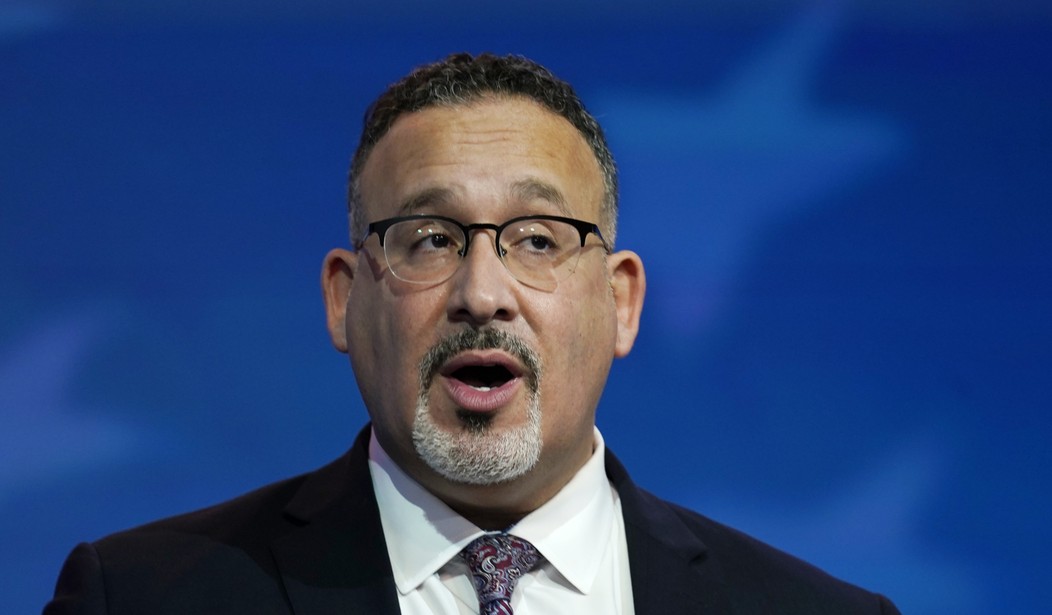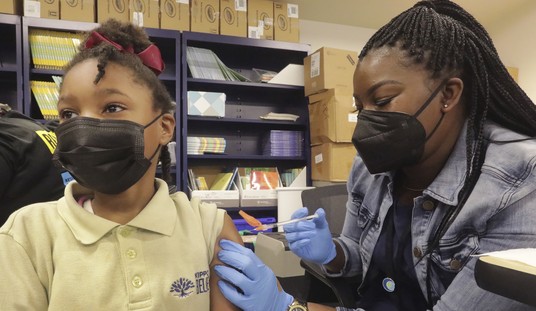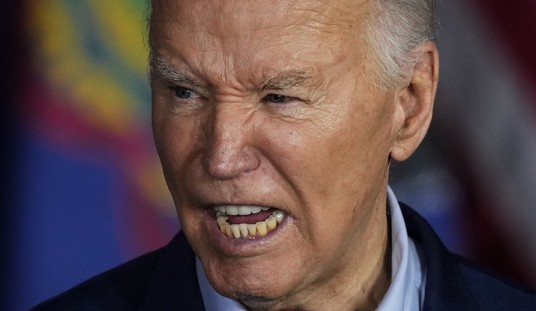You’d think that an educated man currently serving as the leader of the Department of Education, Dr. Miguel Cardona, would know a thing or two about math, economics, finance, or even government. After seeing him get shivved by Poppy Harlow on CNN, of all places, it’s pretty apparent that he has not a clue what he’s doing, which makes him fit right in with this administration.
The Supreme Court during its last term, among many highlights, ruled 6-3 in Biden V. Nebraska that the Secretary of Education does not have the Constitutional standing to waive millions of dollars in student loan debt. It was a strong rebuke, and Chief Justice Roberts authored the majority opinion.
Not willing to take no for an answer, Cardona, Biden et al. are back with the SAVE plan – the Savings on a Valuable Education plan. It’s trying to do an end run around the Court’s order and disguise an even more costly debt transfer from those who took out debt, and saddling it onto the backs of those who did not, in the name of income equity.
Penn Wharton has done a cost analysis of this student loan forgiveness model 2.0. The first forgiveness plan, the one rejected by the Court, would have cost around $400 billion to taxpayers over ten years. This one will cost closer to half a trillion, and some Congressional models have it costing taxpayers significantly more than that.
Here is where the fun part comes in – the sales pitch. Cardona appeared on CNN with Poppy Harlow last week, and of course wanted to talk about the benefits – free college for all who apply. Free college is great for him – it’s great for the economy – people educated for free are able to buy houses and things, so we should have more of that. Poppy, to her great credit (pun intended), wasn’t buying it.
She stopped him mid-sentence when he was trying to tell you about the educational financing equivalent of the rich Corinthian leather in this new Chrysler Cordoba by asking a pretty salient question – who’s paying for that cost? And then she shut up and let him answer.
He first tried to say deficit reduction we’ve already realized opened the door for new programs like this, so it’s essentially found money and won’t cost anyone anything. Except for one little pesky detail, his plan is almost perfect. That pesky detail is the fact that we haven’t realized a dime of savings on the deficit. Actually, we can decimate that last sentence and say we haven’t even realized one penny of deficit reduction on Joe Biden’s watch.
This inane argument coincides with Joe Biden’s ever-present parlor trick that he’s lowered the deficit and/or debt $1.7 trillion dollars thus far in his term as president. Glenn Kessler in the Washington Post rated that as endless Pinocchios for dishonesty. Any reduction in the rate of growth of the deficit was because Congressional COVID measures sunsetted. Those measures were passed while Joe Biden was out of government, and were obligated to expire by statute regardless of whether Biden was president or not.
But keep this in mind when understanding what deficit means. That’s about $10,000 dollars of debt for 2020 alone applied to every man, woman, and child in the United States more than was paid into the system in taxes. Everyone in that year alone owes another $10,000 dollars each just to have the government break even with what they spent. That doesn’t touch the interest on all the other $28 trillion in debt before it, and it doesn’t count anything spent after that.
In Joe Biden’s first two years, he ran deficits of $2.78 trillion and $1.36 trillion. That’s another $8,500 dollars every breathing American owes just for 2021, in addition to whatever taxes you already paid, and another $4,200 per person for 2022. Miguel Cardona is claiming deficit reduction we’ve already seen allows us to use taxpayer money to pay off debt privately contracted by students who now no longer wish to keep that commitment. I’m not seeing a lot of savings. What I’m seeing during Biden’s term is that all of us owe an additional $13,700. And at 7% interest and rising on that debt, throw in another $3,000 or so for good measure. There is no deficit reduction. None. Zero. That’s not how any of this works. A business finance student offering that up would flunk the course.
Harlow, proving she does know how to be a journalist when she wishes to be, wasn’t letting him spin or filibuster. She fact-checked him in real time, cutting him off, asking him pointedly that indeed, the American taxpayers would be on the hook for the cost of this debt forgiveness 2.0. Knowing he’s caught, he simply moves the goalposts.
We’re no longer talking about deficit reductions we’ve already realized. Instead, we’re realizing deficit reductions that are part of this new plan. This is a metric excrement-ton of Wimpy cheeseburgers that we’ll be able to afford in savings one day if we just spend the money now. It’ll all come out in the end, except the cheeseburgers will need to be vegan ones so as to be safer for the climate. So now that we’re no longer fighting the indefensible argument that we’ve already achieved deficit reduction savings, let’s talk about the future deficit savings. (Checks notes.) There aren’t any.
The Penn-Wharton model is estimating that if an average, whatever number that is, amount of students apply for this program, it could cost around half a trillion over ten years. But if these educated kids realize that they probably don’t have to pay borrowed money back if they apply for this new SAVE plan, most, if not all of them, will. The upper ends of what this could cost are easily 50% higher than the program the Supreme Court threw out in June. Cardona doesn’t want to talk about that. He’s still trying to pass off bad math by saying you can’t talk about the costs here unless you accept the deficits which have been reduced. Well, you certainly can and must talk about the costs, especially when there have been no deficits reduced.
I wish one reporter would ask the question of just one of these bureaucrats that is unanswerable – what is the baseline deficit amount in real dollars that this country can afford to rack up each year? Is it $100 billion? $500 billion? $1 trillion? Because when the debt is north of $32 trillion, I’m seeing any deficit north of $1 dollar a year as problematic. If $1.4 trillion for a one-year deficit is “reduced”, and therefore it’s time to spend wildly again, why wouldn’t colleges and universities then tell prospective students to just borrow more, knowing they won’t have to pay it back, and jack up tuitions even higher? All we’re doing here is copying the minimum wage hike fallacy and applying onto another sector of the economy. If you artificially change the supply-demand curve, you’re going to ultimately raise the price of the good or service provided. This is junior college Macroeconomics 1 he’s failing on live TV.
Harlow moves in for the kill with the fact that the deficit, thanks largely in part to Joe Biden signing into law a three-year extension of the Employee Retention Credit, which will cost another half trillion dollars this year alone, is going to be north of $2 trillion. Since $2 trillion is less than $3.1 trillion in 2020, does Cardona still think he can claim that the deficits are being cut by a third? If so, does that mean that the new baseline for this administration is $3 trillion a year, and that is sustainable? I still want to know from this crowd what is the baseline deficit we can add to the backs of our grandkids every year and have it be deemed prudent and responsible.
Cardona tried to whitewash his bad math and bad economics with bad social science. He claimed that we have to do this because poor college-educated people saddled with all this debt can no longer afford to purchase homes. Okay, give him his premise. Everyone gets their student loan debt erased and now are magically into the housing market as prospective new home buyers. I don’t suppose that increase in demand for housing all over the country will have any effect at all on home prices, will it?
The staggering lack of knowledge about how the marketplace works on the education sector is frightening. He’s incompetent, and Poppy Harlow knows it. He just seems to want to go back and harvest the money tree in order to secure the votes of 20-somethings. He’s an economic illiterate. If his boss were worth a darn in the private sector, he’d be fired for delivering an interview like this. Who’s his boss again? Oh, right. This guy.
The late Steve Jobs, and then followed by the Late Don Rumsfeld, used to say A’s hire A’s. B’s hire C’s. Seems appropriate to revisit this particular quote since we’re talking about the secretary of Education. When we get down to the level of when an F hires someone, well, it’s still an F.







